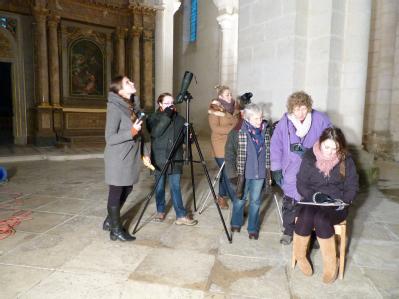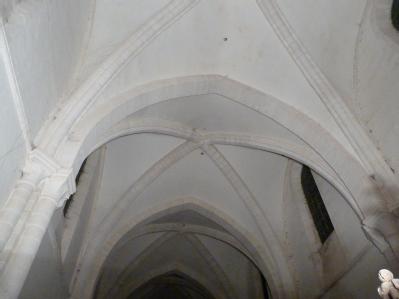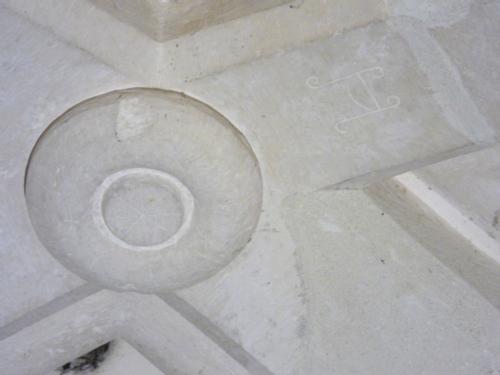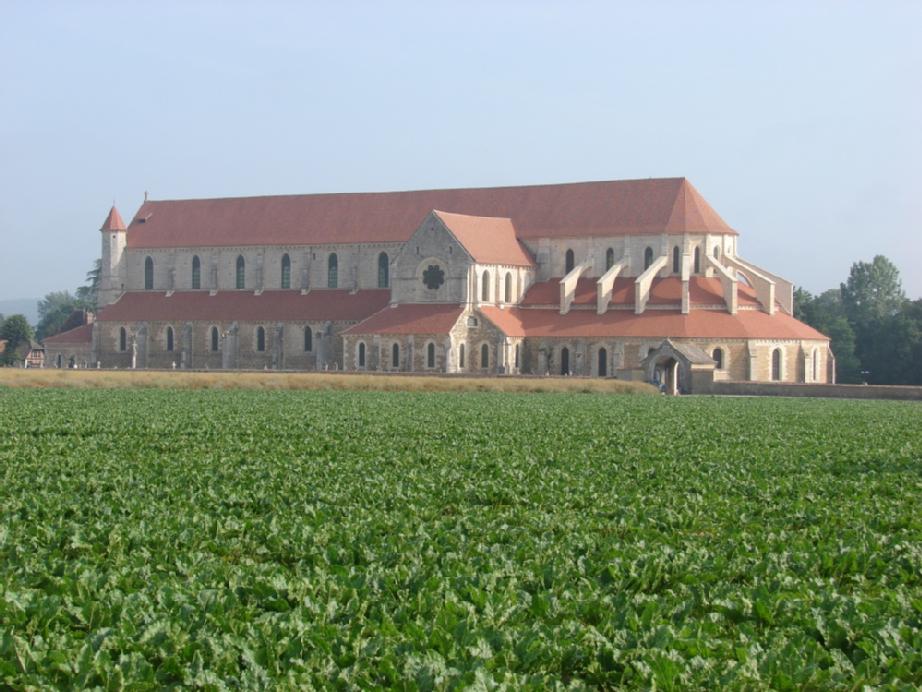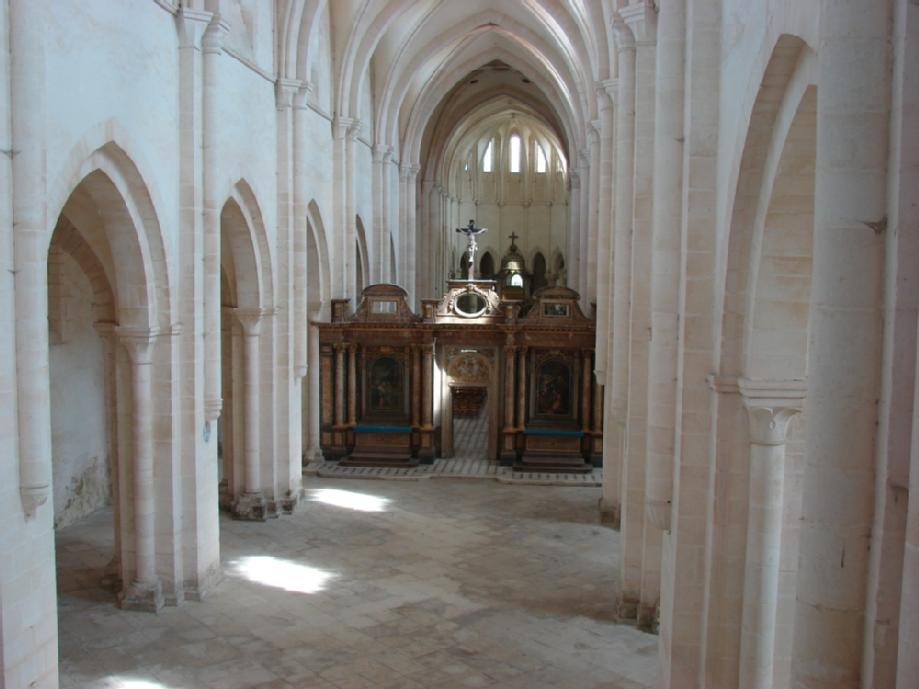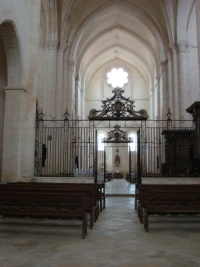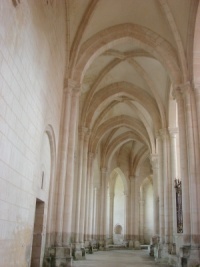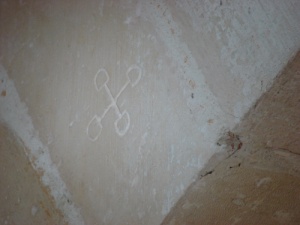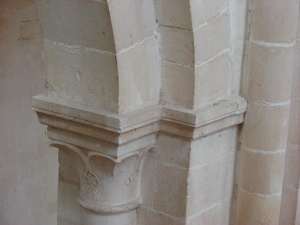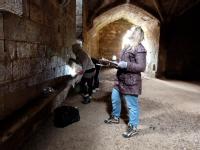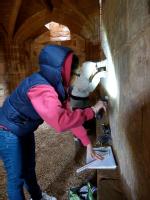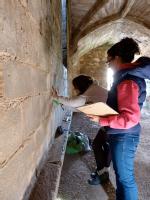Undergraduate Research Scholarship Scheme 2011
Project title: The Construction of the Cistercian Church at Pontigny, c. 1130-1150
Start date: 27th April 2011
Field work dates: July 19th - 28th
End date: 30th September 2011
Undergraduate Researchers: Lucy Henderson, Rose Harris Adamson, Gabriella Marchini (Warwick), Roo Alexander-Jones (Oxford Brookes) and Meredith Hilton (US)
Team Leaders: Dr Jenny Alexander (Warwick) Prof Terryl Kinder (Pontigny)
Fieldwork at Pontigny, July 2011:
Introduction
Pontigny is the most complete Cistercian church in France and is of strategic importance to the development of medieval architecture with its very early use of high rib-vaults. The project will test the theory that the building, including its vaults was constructed in a single campaign by recording and analysing the constructional and masons' marks known to exist on its fabric. Methodologies for recording and analysing data will be adapted for the specific requirements of Pontigny as this is the first time that a Cistercian church has been studied in this way.
The Role of the Students
The group of students will work with Prof Kinder and myself as a fully active team. Each student will be given specific tasks to undertake, for which they will have been prepared through training sessions at Warwick and briefing sessions on site. They will therefore experience fully the workings of a team project, with opportunities at each stage to contribute to discussions of methodology, analysis and the significance of the results. I have been undertaking research on constructional and masons' marks at Warwick for the last three years, and in collaboration with English Heritage's Research Team.
Training and Preparation
Training sessions will be undertaken at Warwick from April 2011 to build on their existing skills, for the Warwick students. Seminars will be held at Pontigny for the whole group on archaeological recording techniques, architectural photography, data preparation and analysis and in the architectural history of the region. One Warwick session will be a mini-project, undertaking recording at a local site, to give students field-work experience. Students will work together on preparation for seminars to develop team-working skills.
Students will gain skills in the archaeological examination of a standing building, in accurate recording, and in analysis of the data recorded. Their architectural knowledge will be enhanced by visits to other buildings in the area, including the site at Guédelon where a building is being constructed using medieval technologies.
April 2011. Training has started at Kenilworth Castle, with a drawing in the undercroft to the 14th-century hall measured and recorded to site. Masons' marks in the 16th-century buildings have also been identified.
Lucy, Gaby and Rosie at Kenilworth
Outcome
By working in collaboration with Prof. Kinder, it will be possible to complete the recording and analysis of the building this summer. The research will be presented at the International Medieval Conference in Leeds in 2012 and written up for submission to a peer-reviewed journal. The students will have the opportunity to participate fully in both of these.
Summer 2012
The students from Warwick and Oxford Brookes universities all participated in the Cistercian Studies session at the International Medieval Conference at Leeds and presented papers on their work on the project that were very well received. Two of the students have since developed their papers for publication and had them accepted in the peer-reviewed periodic literature.
Phase II: Winter 2013-14
Three Warwick graduates have been back to work on the Pontigny project. Rosie Harris Adamson and Lucy Henderson were awarded scholarships for the URSS Pontigny Project in 2011 and they were joined by Agata Gomolka, a MA graduate from the department, who is now working on her PhD. Another Pontigny Project team member, Roo Alexander-Jones, the team's film maker, who graduated from Oxford Brookes university last summer, completed the team. The project was funded by a travel grant from the Society for Medieval Archaeology, with the support of Les Amis de Pontigny, and it has made a major contribution to the study and understanding of this important early-Gothic building in its 900th anniversary year.
The team was trying out some new equipment derived from the optics used by bird-watchers and for the first time it was possible to find and record the marks made by the stonemasons who built the vaults high up in the building. The results are now being processed, but it is already clear that the team's work has provided vital new evidence about the relationship between the high vaults and the main stucture of the building, and this will resolve a long-standing question about Cistercian builders and their place in early-Gothic architecture.
